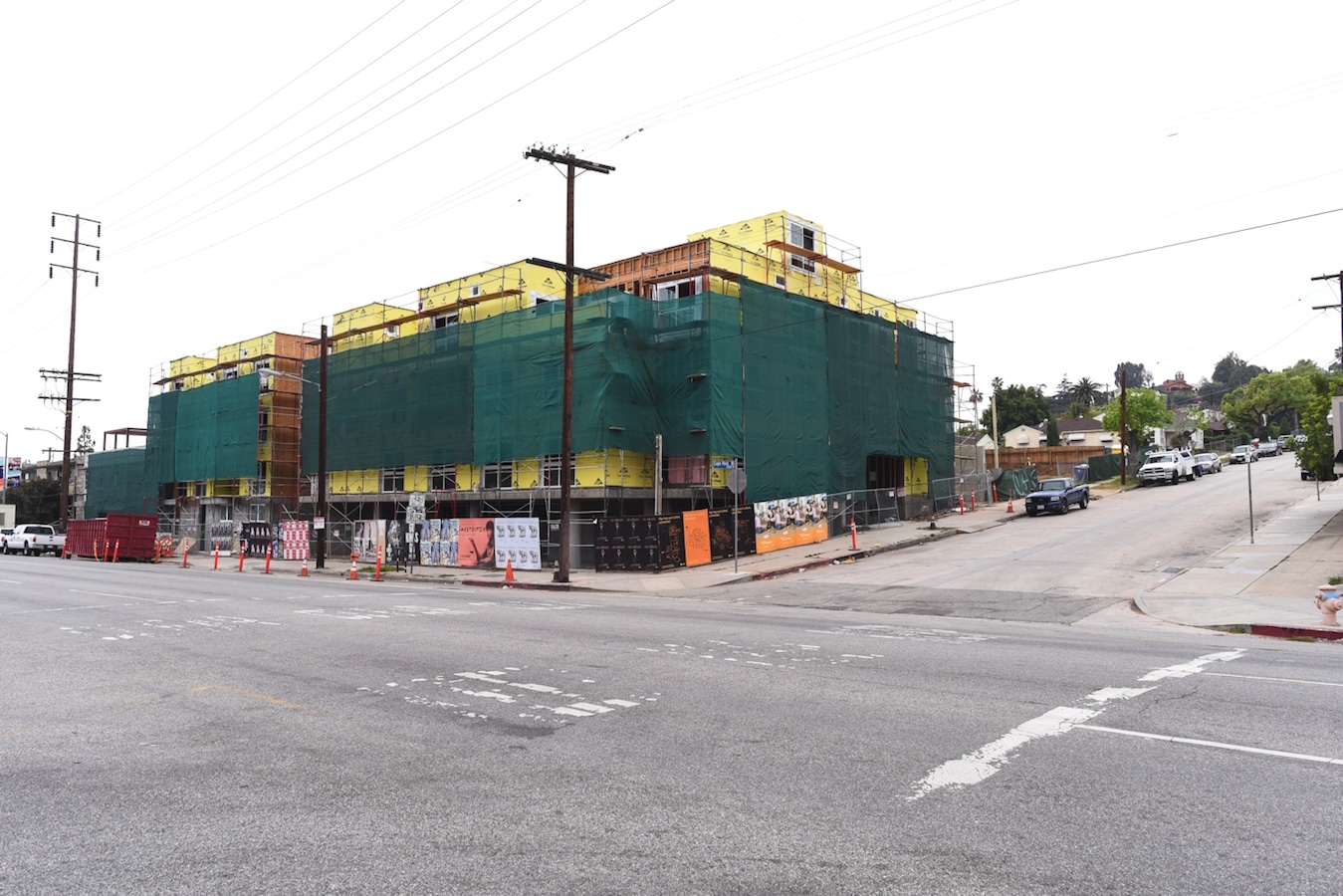
At the corner of Bridewell Street and Pollard Street in Highland Park, three miles east of Occidental, the construction of nine small-lot, single-family residences led by Santa Clarita-based developer Williams Homes forges ahead. The project is part of an increasingly popular trend in urban development across Los Angeles to build small-lot homes. California-based architecture firm Rachel Allen Architecture will soon add to that trend with the development of a 38-unit multifamily residential complex on Eagle Rock Boulevard. The project includes six groups of homes with a park space accessible to all units.
Rachel Allen, owner and principal of Rachel Allen Architecture, attributes the rise in small-lot development to the passage of LA’s Small Lot Subdivision Ordinance. Allen said that, in an attempt to make affordable housing in Los Angeles a reality, the city passed the ordinance in 2006. The ordinance allowed for the creation of smaller single-family homes in zones that permitted apartment buildings, aiming to create a cheaper entry-level price point for first-time home buyers, giving these first-time buyers the opportunity to own, rather than lease or rent, a home.
Allen discussed the features of the 38-unit complex.
“We found a way to make sort of a small park area in the heart of the project that all the homes will have access to, and using a lot of ingenuity we’re trying to make the areas where the cars drive and are stored not defined by that, but also open to other kinds of uses like kids playing, and people walking and bicyclists so that the car doesn’t dominate and define the place,” Allen said.
Compact housing and rethinking car dependence are part of a larger trend in Los Angeles, according to Christopher Hawthorne, the City of LA’s Chief Design Officer and Occidental Urban and Environmental Policy professor. Hawthorne, who spent 13 years as the architecture critic for the Los Angeles Times, has led ongoing dialogues with LA citizens and elected officials around the evolving architecture of the city, including Occidental’s Third LA, a series of conversations about the changing city.
“The city is in the midst of a really dramatic transformation, moving away from the building blocks of its postwar identity, which were largely the car and the freeway and the single-family house, the lawn, the swimming pool, to an experiment really, and a new kind of identity — a new kind of urban form which is much more dependent on shared spaces, multi-family housing, different kinds of mobility that are not just dependent on the car,” Hawthorne said.
According to Hawthorne, fire safety building codes and restrictions for building height obstruct developers’ and architects’ attempts to make Los Angeles more vertical. Buildings over 75 feet require steel or concrete frame construction. Because wood frames are cheaper, developers tend to build five or six-story wood-frame buildings just under the 75-foot limit. This is a key factor in LA’s boulevard architecture.
“It’s a city with a great architectural history and tradition. Since WWII, most of the great, innovative architecture has been in the private realm, which is to say it takes the form of single-family houses,” Hawthorne said. “The challenge now is to take some of that experimental energy and apply it to the public realm where we’ll be investing huge amounts of money into various kinds of infrastructure.”
Sam Page (junior), life-long California resident and 18-year resident of Culver City, attributes changes in his neighborhood to a shift from single-family developments to walkable community-based living.
“There’s been a really big attempt in lots of West LA, and in particular Culver City, to change the layout to make it more of a walkable community with a very millennial bent,” Page said. “[As Culver City] has become more popular and a bunch of real estate attention has come there, the go-to has not been to build more individual houses per se, but to try to build these very large condo communities.”
According to Allen, affordable housing will be a persistent issue for Los Angeles.
“People all over the world fantasize about living in California, and they’re not making any more of it, there’s no one making more California, so there’s some pressure on the real estate market as a result,” Allen said. “[Affordable housing is] one of those problems where you have to try a lot of different things, and if we didn’t have small lot projects for first time home buyers to get into, where would they be buying? They probably wouldn’t be buying.”
![]()



































